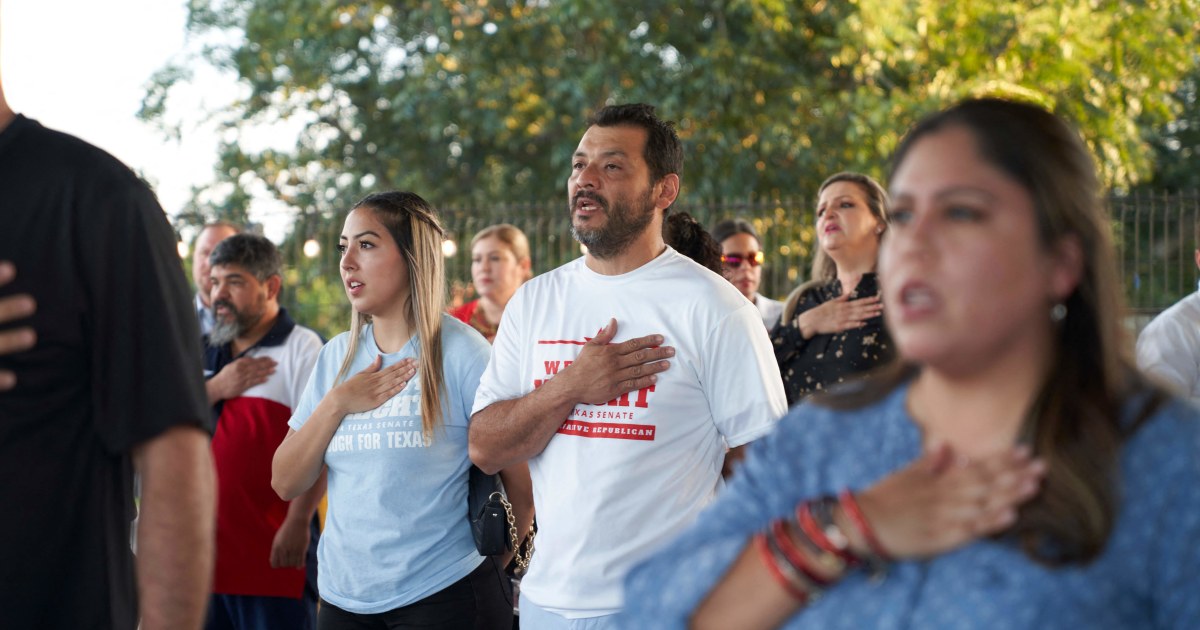Their names were Debanhi Escobar, Michelle Nicolich, Francesca Flores, Susana Cáceres, María Belén Bernal, Adriana Pinzón, Luz María López and Blanca Arellano.
These are just some of the tens of thousands of cases that have put a face this year on the pandemic in the shadow of femicides, one of the endemic evils of Latin America, and for which this Friday women will march throughout the region.
The murder of women because of their gender is the maximum expression of sexist violence for which thousands of lives are lost every year in the region.
It is impossible to know how many exactly because only a few cases are counted as femicides.
Of all the violent deaths of women, only between 30% and 35% are classified as femicides by the authorities, according to the National Observatory on Feminicide of Mexico, a trend that is replicated in other countries.
What is known is that gender violence has its own common rules throughout the region: it happens systematically and persistently from the privacy of homes to public spaces;
it is supported by inequality and feeds on the prejudices accepted in macho societies and impunity.
But he knows no borders, ages, nationalities or social classes.
The absence of the murdered women leaves a void in their families, friends and communities difficult to repair that gains strength every November 25, the International Day for the Eradication of Violence against Women, a day of mourning and indignation that brings out society to the streets to demand justice and a life free of violence.
From Mexico to Argentina, passing through Guatemala, Colombia, Ecuador, Chile and Peru, these are some of the cases of femicide that have shocked Latin America and what they reveal about the situation in each nation.
The 'Debanhi case' and the authorities who hold women responsible for their own deaths
Mario Escobar and Dolores Bazaldúa, parents of Debanhi Escobar. Julio Cesar Aguilar
On April 9, 2022, Debanhi Escobar disappeared on a highway in Monterrey, in front of the Nueva Castilla motel, in the State of Nuevo León.
After two weeks of intense search, the body of the young woman was found inside one of the cisterns of the establishment.
The State Prosecutor's Office suggested in a first version of the events that the young woman had fallen into the water tank, which sparked the indignation of the family, society and feminist groups.
It was insulting that the authorities held the young woman responsible for her own death, a popular strategy used by many prosecutors to try to solve the violent deaths of women.
Seven months after the femicide, there is still not a single person arrested.
The desperate family commissioned a second autopsy which revealed the young woman was murdered and sexually abused.
After the incompetence shown by the local authorities and the revictimization of the young woman and her family, the death is being investigated by the Attorney General's Office without any progress to date.
The silence after so many months led to the fall of the Nuevo León state prosecutor, Gustavo Adolfo Guerrero.
The case of Debanhi Escobar this year has become a symbol of sexist violence in Mexico, where 11 women are murdered every day and 95% of crimes are not solved.
Of the almost 4,000 violent deaths of women that occurred in the country during 2021, according to official data, only around 1,000 were investigated as a crime of femicide and less than 2% end up in front of a judge.
Brazil and media crimes like Michelle Nicolich's
Brazil has a famous and ambitious law to combat violence against women, the Maria da Penha law, but the vast majority of femicides are still little more than small local news.
It is rare that it becomes a national issue.
The debate revolves rather around impersonal statistics and norms.
And, when they have an echo beyond the police note, it is usually because the protagonists were famous or because the crime was recorded by a security camera.
This is the case of Michelle Nicolich, 37, shot to death by her ex-husband in São Paulo last September after picking up her children from the nursery.
The assailant and father of the children also killed the one-year-old boy.
The fact that the crime occurred in a hard-fought electoral campaign and that the attacker was a weapons collector —a group pampered by the Bolsonaro government— fueled the public debate on the spectacular increase in pistols and rifles in the hands of civilians.
Then there was a typical Brazilian twist: the killer had a tattoo of Lula.
Last year, 1,341 Brazilians were murdered for being women in this country of 210 million people.
The figure compiled by the Yearbook of the Brazilian Public Security Forum represents a minimal drop after years of an upward curve.
The balance of this NGO allows us to glimpse the regional disparity with which violence against women is addressed.
A third of the murders of Brazilians are classified as femicide at the national level, but it ranges from 58% in the Federal District to 9% in the State of Ceará.
Franchesca Flores, murdered at the hands of her partner in Chile
Monument Women in Memory, made in commemoration of women victims of sexist and state violence, in Santiago, Chile. Sofía Yanjarí
In Chile, 45 femicides are registered this 2022 and four feminist suicides - women who, after denouncing multiple forms of violence and not receiving support from the authorities, end up taking their own lives - according to the exhaustive accounting carried out by the Chilean Network against violence against women. .
The victims were of various ages, from 17 to 63 years old.
As in Chile there has been a sharp increase in migration in recent years, among those murdered there are several foreigners, from Colombia, Bolivia or Venezuela.
Femicides occur in all contexts: within marriage and perpetrated by strangers.
It does not distinguish socioeconomic level and occurs in large cities and small towns.
Like Frutono, a beautiful town on the side of Lake Ranco, in southern Chile,
where a monstrous event occurred on September 1: Franchesca Flores Raillanca, 40, who had given birth to a child less than two weeks before, was murdered by her 23-year-old partner, a police officer.
The man killed her in front of the child, according to the accounts of her relatives and the facts exposed by the Prosecutor's Office.
Franchesca's body was found by her eldest son, a teenager.
“There is greater awareness regarding violence against women, femicide has been criminalized in the law and today there is talk of the murders of women for reasons of gender, but the figures remain stable and this situation alerts us.
Therefore, you cannot continue doing the same thing,” explains Lorena Astudillo, a feminist and member of the National Coordination of the Chilean Network against Violence against Women, the independent organization that installed the concept of feminicide in the country for more than Two decades.
In Chile, femicide is punishable by up to life imprisonment and no longer only in marriage contexts, as was the case until a few years ago.
“But the institutions continue to insist on punishing, when it becomes necessary to promote a life free of violence.
Susana Cáceres, the last femicide that has shocked Argentina
Almost half of the women in Argentina have suffered one or more forms of violence by one of their partners: physical, psychological, sexual, and/or economic.
This is the data provided by the first Survey on the prevalence of violence against women published this week in the South American country.
It shows how widespread it is and how difficult it is to eradicate it despite the efforts of recent years.
Adriana Herbas and Lucas Tomás Di Nisio, cousin and son of Susana Cáceres in the neighborhood of Villa Trujui, province of Buenos Aires.Silvina Frydlewsky
Femicide persists without major changes since the great social mobilization born in 2015 with the
Ni Una Menos
movement .
In the last decade, the total number of women murdered has never dropped below 250. In 2021 there were 251 femicides, one every 35 hours on average, according to the registry of the Supreme Court of Justice.
In 88% of the cases, the victim knew the femicide, and in 39% lived with him.
Six out of ten were her partner or her ex-partner.
“Almost nothing changed.
Many men still don't understand that no is no,” says Adriana Herbas, cousin of Susana Cáceres, who was found murdered on November 18 on the side of a road after ten days of searching.
Cáceres, 42 years old and mother of four children - the youngest a year and a half baby - suffered a very violent death.
Her body had numerous cuts, head trauma, bruises on her face and neck, and signs of sexual abuse.
“The defendant had been denounced for gender violence and sexual abuse.
If justice had acted, this would not have happened," laments Herbas when talking about the latest femicide that has shocked Argentina.
The bloodiest year in Ecuador and the death of María Belén Bernal
The last time María Belén Bernal, a 34-year-old lawyer, was seen at the Police School, located north of Quito, the capital of Ecuador.
It was after midnight on Sunday, September 11, she got into her car to see her husband, Lieutenant Germán Cáceres, and she never got out of it again.
Relatives and friends of María Belén Bernal hold her photo during the National Mobilization against femicides in Quito.Ana Maria Buitron
There were 10 days of searching around the police training school, surrounded by ravines, quarries and garbage dumps where Elizabeth Otavalo, mother of María Belén, walked to find her daughter's body.
A tortuous search under a shadow of doubts that to this day involves the Bernal case in which high-ranking officers of the Ecuadorian National Police are being investigated for their actions in violating protocols for the entry of a civilian into the police compound, the search of the body and allow the escape of Cáceres, who had time to leave the body of María Belén in the bushes, return to school and play a soccer game.
Bernal's case further shocked the number of femicides and violent deaths based on gender in Ecuador in its most violent year against women: 345 between January and November 2022. On average, a woman is murdered every day in the South American country .
Of the total number of Ecuadorians murdered, 70 have been processed by the courts as femicides and 275 as other violent deaths;
that is, murders, homicides, hired assassins and rape with death, according to data from the National Council of the Judiciary (CNJ).
Femicides and violent deaths against women are the highest since Ecuador began to officially register them in 2014, since then there are already 1,639, of which only 42% of the cases have received some type of sentence, the rest are under investigation or in trials that cannot continue because the femicides have fled before being prosecuted, such as the case of María Belén Bernal, whose lieutenant Germán Cáceres has not yet been found by the Police.
The Colombian Adriana Pinzón: it was not a homicide, it was a femicide
Women in Colombia take to the streets this 25N to remember that this space is also theirs and to demand justice for the crimes of which they are victims on public roads, but also for those that occur in a more silent and underhanded way within houses.
Graffiti in honor of Colombian women in Bogotá.Vannessa Jiménez
The Prosecutor's Office has registered 180 femicides this year, but feminist groups have figures that double the official one.
According to the feminist collective Casa de la Mujer, there have been at least 500 in 2022. Colombia, despite having, since 2015, a law that contemplates femicide as an autonomous crime, has not succeeded in ensuring that gender is valued as a a key factor in investigations into the murders of women.
Many perpetrators are still being accused of simple homicide and not for the crime of femicide, which has sentences of between 45 and 60 years with no possibility of reduction.
Jonathan Torres, the confessed murderer of Adriana Pinzón, was sentenced to 28 years in prison for manslaughter.
The victim's family, who is also his family, demands justice and asks for a greater sentence.
Torres was Adriana's brother-in-law and according to one of his versions, which was taken into account by the Prosecutor's Office, he killed her because he wanted to rob her.
Adriana, 42, was murdered in her house and her body was thrown on a road, where it would be difficult to find her.
Thanks to a security camera recording, it was learned that on July 7, her sister's boyfriend had entered her home.
After five hours inside, he came out loaded with plastic bags and a stick.
Adriana was reported missing and almost a month later she was found dismembered inside four black plastics in a ditch on a road in Zipaquirá, in the center of the country.
According to the Prosecutor's Office, the woman was stabbed and suffocated to death.
50 years for the murderer of Luz María López, the rare exception of Guatemala
Ada Morales and Byron López, parents of Luz María del Rocío López Morales, remember her and participate in the vigil held to commemorate the women victims of femicide in Guatemala City.Sandra Sebastian (©Sandra Sebastian/El Pa's)
The femicide of Luz María López, a criminal investigator from the Public Ministry murdered by her husband, was one of the 652 violent crimes against women registered in Guatemala in 2021 and perhaps the one that generated the most commotion that year in that Central American country, the region with the highest rates of gender-based murders of women in Latin America.
The body of the 25-year-old, mother of a girl who was one year and nine months old at the time, was found on January 22 of last year with signs of torture in a sewer near her office two days after her disappearance. .
Her case has also just become a rare exception and an example that, if there is a will, the impunity that usually marks cases of femicide can be combated.
The one who was her husband, Jorge Zea, was sentenced last month by a court to 50 years in prison for his murder, the maximum sentence contemplated in that country.
The judges took into account the viciousness with which the murderer acted, who strangled and burned his partner in front of his little daughter.
But the reality for most victims of femicide is very different in a region where, in many cases, the names of the murdered women are not even known.
This was denounced by Karla Campos, lawyer for Pamela Molina, another 26-year-old "low-income" woman murdered just a month before López and who is still waiting for justice.
“This December 5 marks two years since she disappeared and the Public Ministry has absolutely nothing.
She has not investigated and the family continues to seek justice (...) It has been a via crucis ”, she recounts.
According to a report by the Grupo de Apoyo Mutuo (GAM), a foundation in which Campos works that makes a monthly count with official data, in 2022 there are already 568 women who have been victims of violent murders, which represents an increase compared to the previous two years.
Also, 47.
Blanca Arellano, a Mexican victim of a brutal femicide in Peru
Blanca Arellano, a 51-year-old Mexican woman, was murdered in Lima by a man she met through a video game platform.
The woman traveled to Peru a few weeks ago to meet the
gamer
with whom she had shared online conversations while playing.
But Juan Pablo Villafuerte, a medical student fourteen years her junior, did not have the same intentions.
The man is now detained accused of femicide and organ trafficking in a country where every day 380 women report being victims of family and sexual violence.
Arellano's dismembered body was found on a beach with no face, fingerprints or organs, floating in the sea in early November.
Blanca Arellano's family was able to recognize her body by the only thing they could not take from her: an Atlantean ring.
According to the Crime Observatory of the Public Ministry, between January 2017 and October 2022, 651 Peruvians and 23 foreigners died for the simple fact of being women in Peru, at the hands of their partners or ex-partners.
According to the National Penitentiary Institute, around 2,105 people are serving sentences in Peruvian prisons for crimes related to sexist violence.
But justice is often not done: only 1% of femicide complaints reach a sentence in the same year as the complaint, and feminist organizations demand that institutions such as the National Police and the Prosecutor's Office incorporate a gender perspective into their investigations.
subscribe here
to the EL PAÍS México
newsletter
and receive all the key information on current affairs in this country


/cloudfront-eu-central-1.images.arcpublishing.com/prisa/NS3ZU25XBNH4BJLTJPBCRCLEXE.jpg)

/cloudfront-eu-central-1.images.arcpublishing.com/prisa/2XWZK2SNNVHNTOU6DYROGV3XVI.jpg)

/cloudfront-eu-central-1.images.arcpublishing.com/prisa/AHJ62TE64BG7PM33WYWZW45VXE.jpg)
/cloudfront-eu-central-1.images.arcpublishing.com/prisa/B6W3GSOG7DAIIICDVPVMCLCLCU.jpg)

